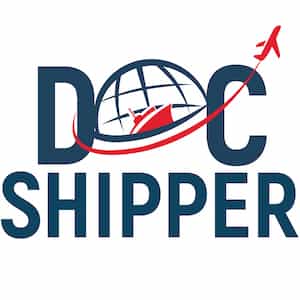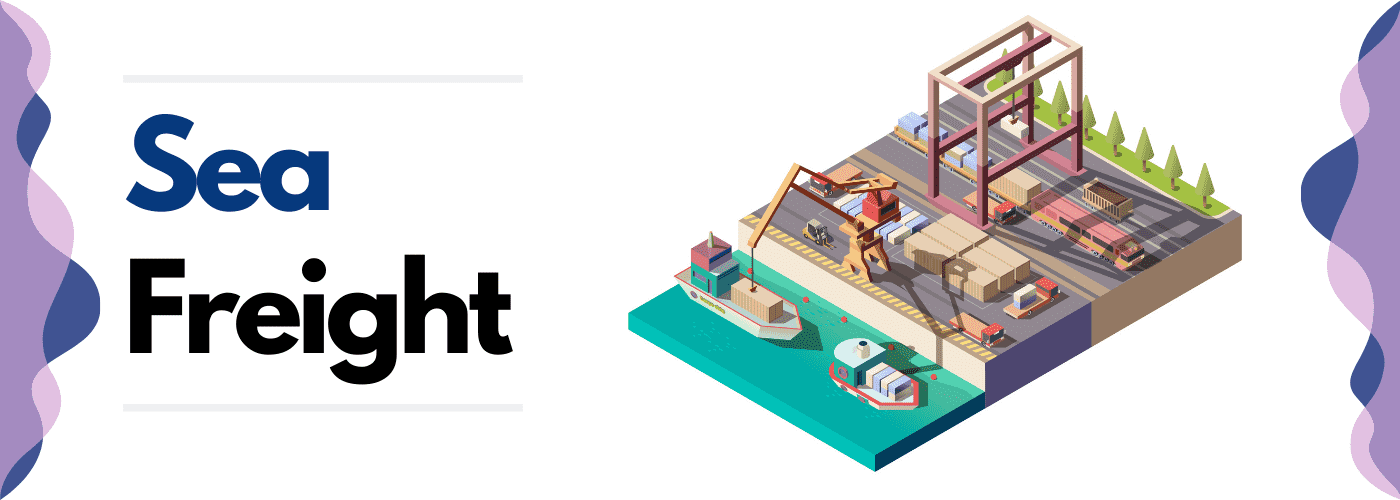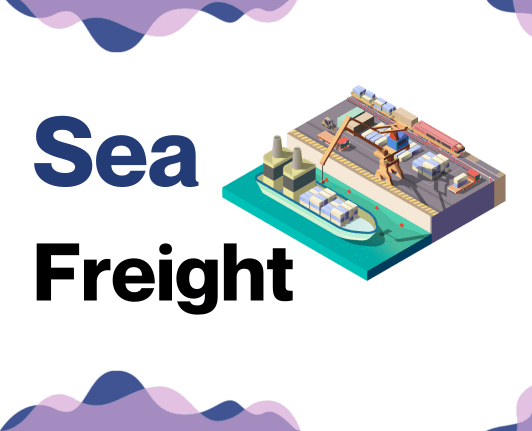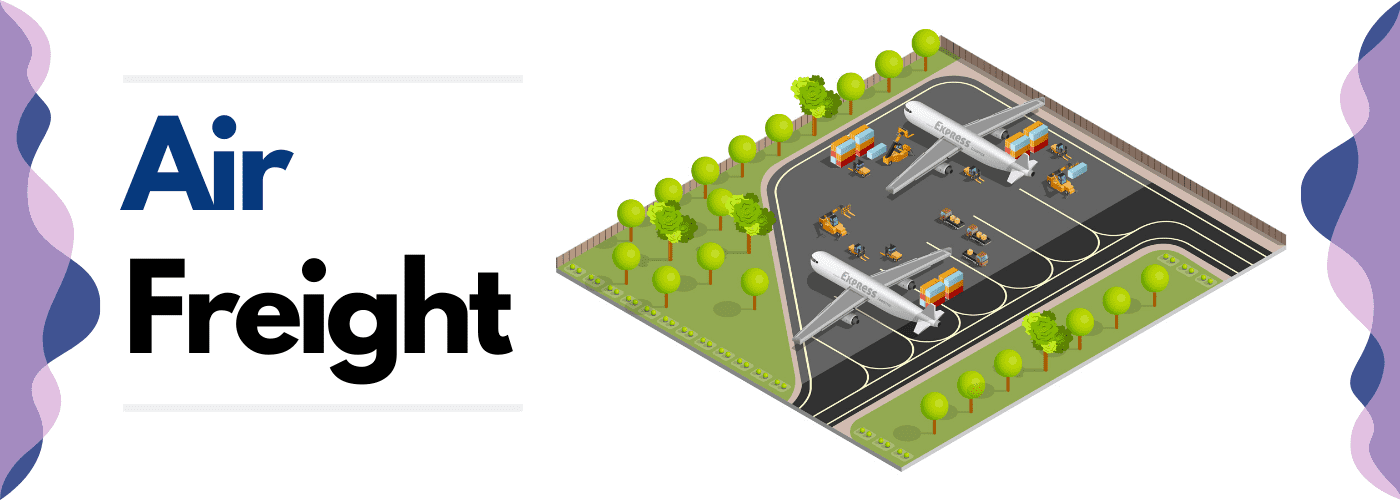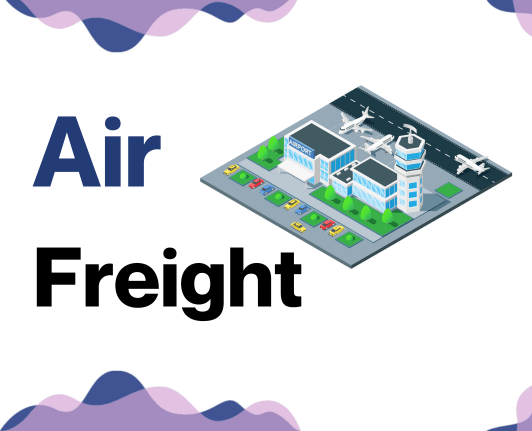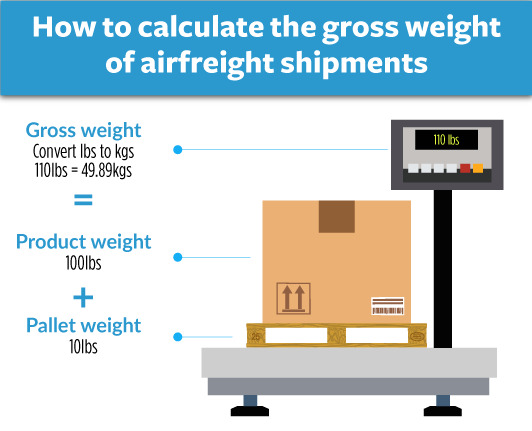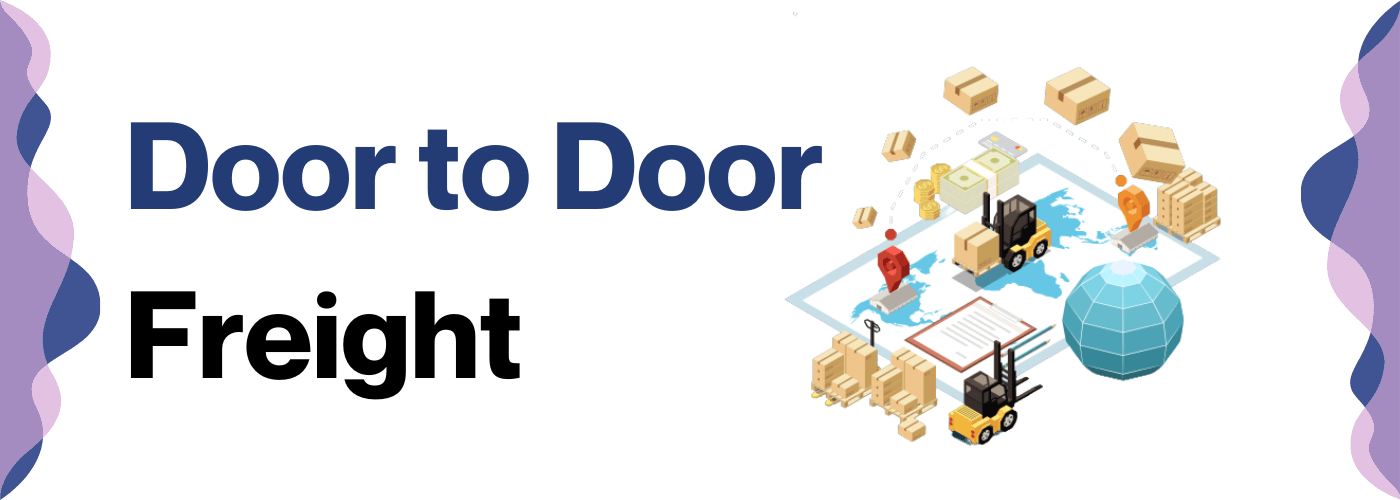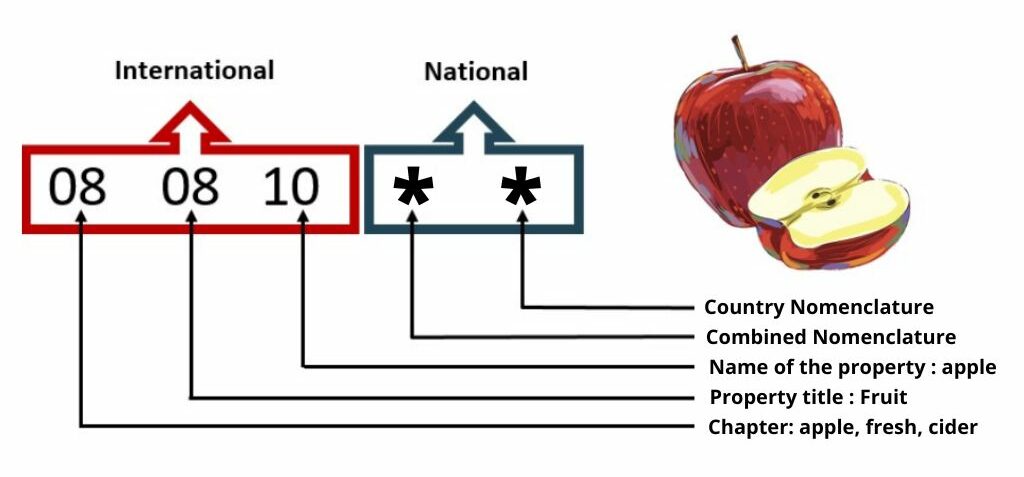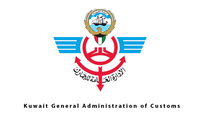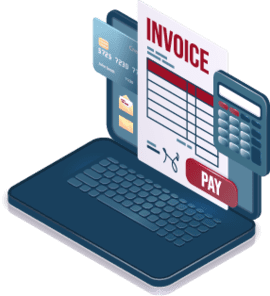Ever wondered how to transport a frozen durian from Malaysia to Kuwait without causing a stinky situation? Arranging freight is a pesky puzzle that often has enterprises tangled in a web of complex rates, fluctuating transit times, and intricate customs regulations.
This comprehensive guide is designed to offer clarity and simplifications to these challenges, enabling your business to smoothly sail through the shipping process. Amid the layers of information you will discover, we dissect and differentiate between various freight options, unearth customs clearance procedures, unmask duties and taxes, and serve a platter of advice tailored specifically for your unique business challenges.
If the process still feels overwhelming, let DocShipper handle it for you! With us managing your cargo, every hurdle is an opportunity to create thriving success stories across the oceans.
Table of Contents
Which are the different modes of transportation between Malaysia and Kuwait?
Deciding on the optimal shipping route between Malaysia and Kuwait is a game of strategy. Think of it as plotting a path in an elaborate board game. With Malaysia being a maritime nation and Kuwait located in the Middle East, it's like having your pieces on different corners of the game board.
Crossing multiple countries by road or rail can feel like bouncing between risky squares, so that might not be your best play. However, airlifting goods is a rather speedy but expensive knight move. Alternatively, think of sea freight as the sturdy rook move, slower but reliable and cost-effective, making it a winning strategy for many businesses.
How can DocShipper help?
Shipping goods from Malaysia to Kuwait can seem challenging. But with DocShipper, it's smooth sailing. We take care of every aspect of your shipping needs, from transport organization to customs clearance. Don't get tangled in the logistics - let us streamline it all for you. Want a free estimate in less than 24 hours? Contact us! Need some queries cleared? Our consultants are just a call away.
DocShipper Tip: Sea freight might be the best solution for you if:
- You're dealing with hefty quantities or oversized goods. Sea transport is your go-to for maximizing space without stretching your budget.
- Time sensitivity isn't a concern for your shipment. Ocean freight is known for its leisurely pace, especially when compared to the speed of air or rail.
- Your supply chain connects key international harbors. This positions you to take full advantage of a wide-reaching network of ocean trade routes.
Sea freight between Malaysia and Kuwait
Dive into the thriving world of ocean freight between Malaysia and Kuwait in this guide, bringing to light their trading relationship, the ports that act as commercial lifelines, and how sea freight emerges as the most economic option for large consignments, despite its snail pace.
Shipping between Malaysia's bustling ports of Klang and Penang, to Kuwait's pivotal Shuwaikh and Shuaiba ports unlocks countless opportunities, weaving a intricate trade network. But just like a crystal clear sea can hide unpredictable currents below, this might not always be smooth sailing. Businesses often grapple with perplexing regulations and costly blunders during the shipping process, akin to the uncharted waters of the vast ocean.
Be anchored with this guide. It's packed with invaluable tips, practices, and specifics that stabilize your shipping journey, transforming tumultuous waves into a tranquil sea voyage, designed with your ease in mind. It's the compass you need to avoid the perilous pitfalls and navigate with confidence through the sea of international shipping.
Main shipping ports in Malaysia
Port of Klang
Location and volume: Also known as Port Klang, it is the largest and busiest port in Malaysia and is crucial for international trade. Located in Selangor, it manages over 13 million TEU per year.
Key Trading Partners and Strategic Importance: Although it handles cargo from all over the world, its key trading partners include China, Singapore, India and Japan. It acts as a major gateway to the Malacca Strait, one of the most important sea routes globally.
Context for Businesses: If you're planning to penetrate the Asian market, the Port of Klang could be a fundamental part of your strategy due to its well-established connections with major Asian economies.
Port of Tanjung Pelepas
Location and volume: Situated in Johor, it's the second largest port in the country, and handled over 11 million TEU in 2022.
Key Trading Partners and Strategic Importance: With a large focus on transshipment cargo, key trading partners include those from the Far East, Europe, and the Americas. The Port of Tanjung Pelepas is also strategically important and is home to two of the world's largest container shipping liners, Maersk Line and MSC.
Context for Businesses: The Port of Tanjung Pelepas is an ideal choice for those whose shipping strategy relies heavily on transshipment operations. Its location at the confluence of the main east-west shipping lanes offers minimal deviation time off these lanes.
Port of Penang
Location and volume: Located in Penang Island, the port handled over 1.4 million TEU in 2022.
Key Trading Partners and Strategic Importance: Major trade partners include countries in Southeast Asia, Europe, the Middle East, and the Americas. The Port of Penang is one of the oldest and most important ports in the country.
Context for Businesses: If your business trades heavily with Southeast Asian economies, the Port of Penang, with its long-established trading links, could be an ideal choice.
Port of Bintulu
Location and volume: Situated in Sarawak on the island of Borneo, the port handled roughly 1 million TEU in 2022.
Key Trading Partners and Strategic Importance: It is the world's ninth-largest port by annual cargo tonnage and the leading port for liquefied natural gas exports.
Context for Businesses: If your business deals in energy-related exports, particularly LNG, investing in a partnership with Port of Bintulu could prove highly beneficial given its prominence in global energy trade.
Port of Johor
Location and volume: Located on the eastern mouth of the Straits of Johor, across from Singapore, this port handled less than 1 million TEU in 2022.
Key Trading Partners and Strategic Importance: Its principal trading partners include Indonesia, India, China, Thailand, and Australia. It's particularly important for industries due to its proximity to major industrial and manufacturing hubs.
Context for Businesses: The Port of Johor (Pasir Gudang) offers advantages like industrial real estate and bonded zones. If your business includes heavy industries like shipbuilding, palm oil, and more, this port might be crucial for your logistics.
Port of Kemaman
Location and volume: Located in Terengganu on the east coast of Peninsular Malaysia, this port specializes in handling liquid bulk cargo and off-shore cargo.
Key Trading Partners and Strategic Importance: Primarily serving the oil and gas industry, this port is strategically placed to tap into the vast offshore oil fields located to the east of Peninsular Malaysia.
Context for Businesses: Businesses involved in the oil and gas sector could stand to gain significantly from shipping through the Port of Kemaman. Its deepwater berths and specialized handling make it ideal for large vessels and offshore logistics.
Main shipping ports in Kuwait
Shuwaikh Port
Location and Volume: Situated on the southern shores of Kuwait Bay, Shuwaikh Port is a vital hub for businesses seeking to connect with major regional traders. This port handles a shipping volume of approximately 1 Million TEU annually.
Key Trading Partners and Strategic Importance: Some of the key trading partners of Shuwaikh Port are China, USA, Japan, Germany and UAE. Shuwaikh's importance lies in its proximity to Kuwait City center and various industrial areas, making it the premier port for containers, general cargo, and ro-ro shipments.
Context for Businesses: If you're looking to do business with markets in the Middle East, Asia, and Europe, Shuwaikh Port could be a crucial part of your logistics strategy. Given its facilities to handle a diverse range of goods and its connectivity to major highways, it could significantly streamline your shipping operations.
Shuaiba Port
Location and Volume: Located in the Al Ahmadi Governorate, Shuaiba Port has been a cornerstone for commercial and industrial business due to its vicinity near the Shuaiba Industrial Area. It has a shipping volume of approximately 450,000 TEU.
Key Trading Partners and Strategic Importance: Key trading partners include China, India, UAE, and Saudi Arabia. Shuaiba’s strategic significance is derived from its direct access to major industrial and refining areas, which makes it a key player for energy-related goods.
Context for Businesses: If your business is in the industrial or energy sector with a footprint in the Middle East, Shuaiba Port offers an ideal starting point for your shipping strategy. With its capacity to handle bulk and general cargo efficiently, it can serve as a significant link in your supply chain.
Doha Port
Location and Volume: Doha Port, famous for its proximity to Kuwait City's center, has a substantial shipping volume of around 375,000 TEU.
Key Trading Partners and Strategic Importance: Doha Port majorly trades with the USA, Japan, China, India, and Saudi Arabia. The port's strategic importance comes from being a prime choice for cruise lines and high-priority cargo.
Context for Businesses: If you're seeking to penetrate markets dealing with high-value and expedited goods or the thriving tourist circuit in the Middle East, Doha Port is a resourceful option considering its high-profiled networks.
Please note that while these are the main ports in Kuwait, the country also hosts several smaller ports that cater to specific business needs and sectors. Choosing the right port for your business depends on your goods, target market, and shipping requirements. By factoring in all these elements, you can then devise a successful logistics strategy.
Should I choose FCL or LCL when shipping between Malaysia and Kuwait?
Are you gearing up to ship goods between Malaysia and Kuwait and scratching your head over which sea freight option to choose? FCL and LCL, also known as consolidation, are your key players. Your selection can make or break your shipping strategy, impacting cost, delivery time, and overall success.
Let's dive in to understand their differences and help you take the reins, making a well-informed, tailor-made decision for your specific needs. Stay tuned!
LCL: Less than Container Load
Definition: Less than Container Load (LCL) is a shipping term referring to a small-range freight option. It allows businesses to only occupy a part of a container, sharing the remaining space with others, making it both cost-effective and flexible.
When to Use: This method is perfect for you when your cargo is less than around 15 cubic meters (CBM). Shipping smaller volumes via LCL can mean decreased costs as you're only paying for the space you use, and increased flexibility since consolidation does not necessitate a full container load.
Example: Imagine you're a small business in Malaysia specializing in producing unique pottery products for the Kuwaiti market. The demand varies and rarely ever does your shipment exceed 15 CBM. In such a scenario, opting for LCL shipment would be the most economical and adaptable option as it doesn't require you to wait till you've enough goods for a full container.
Cost Implications: While LCL freight may incur additional charges such as warehousing and handling fees due to shared space, the total cost still often falls below that of Full Container Load (FCL), especially for smaller shipments, thereby adding to your cost savings and bottom line.
FCL: Full Container Load
Definition: FCL shipping, short for Full Container Load shipping, is a type of ocean freight where your cargo is loaded into a container, such as a 20'ft or 40'ft container, exclusively for your goods (hence 'full') from the port of origin to the destination.
When to Use:
FCL is the most cost-effective and secure method for high volumes of goods. If your cargo exceeds around 13/14/15 Cubic Meters, FCL shipping between Malaysia and Kuwait becomes the preferred choice. This is due to the fact that the fcl container is sealed from origin to destination, ensuring the utmost safety of your goods.
Example:
Let's consider an electronics manufacturer shipping box-packed television sets, occupying 18 CBM. Using an FCL method ensures a safer, cost-effective journey for high-volume freight like ours, as the entire 20'ft container will be filled with these television sets only.
Cost Implications:
While obtaining an FCL shipping quote, you’ll be billed with a flat rate per container rather than for each separate unit. This means, regardless of whether your goods fully fill the container or not, you’ll pay the same amount. As such, maximizing the use of the container space optimizes the cost, making FCL less expensive for larger shipments.
Unlock hassle-free shipping
When shipping between Malaysia and Kuwait, the choice between consolidation and a full container isn't always straightforward. That's where DocShipper steps in! Our team of ocean freight experts is dedicated to simplifying your shipping process. We analyze factors like your cargo volume, type, and urgency to provide the best recommendation tailored to your business needs. Don't let shipping be a hassle, let us smooth out your journey. Contact us today for a free shipping cost estimation!
How long does sea freight take between Malaysia and Kuwait?
Sea freight from Malaysia to Kuwait takes on average between 20 to 30 days. However, the exact transit times depend on several factors, including the specific ports of loading and destination, the weight, and the nature of the goods shipped.
As a result, the times listed are just averages, and for a more tailored quote that suits the specifics of your shipment, getting in touch with a freight forwarder like DocShipper can be incredibly beneficial.
Below is a table detailing the average transit times between the chief freight ports in both countries.
| Malaysia Ports | Kuwait Ports | Average Shipping Time (Days) |
| Port Klang | Shuwaikh Port | 23 |
| Penang Port | Shuaiba Port | 22 |
| Tanjung Pelepas | Shuwaikh Port | 26 |
| Johor Port | Shuaiba Port | 25 |
*These are average timings and can vary depending on various factors, reaching out to a freight forwarder is advised for accurate estimates.
How much does it cost to ship a container between Malaysia and Kuwait?
Uncovering the exact shipping cost from Malaysia to Kuwait can be like panning for gold in a choppy ocean; it's sophisticated and variable. Nailing down an exact figure is tricky, with ocean freight rates anywhere from $50 to $500 per CBM.
Many elements play their part in this great theater of shipping, including the Point of Loading, Point of Destination, the choice of carrier, nature of goods, and the market's ever-changing mood.
Don't drown in these details; our astute shipping specialists will dive deep, tailoring a quote for your specific needs and ensuring you navigate these waters with the best possible rates. Let us be your compass in this vast ocean of possibilities!
Special transportation services
Out of Gauge (OOG) Container
Definition: These are specialized containers designed for goods that can't fit within the dimensions of standard containers due to their height, width, or length. They can either be open-top, with removable tops or flat rack, having sides that can be folded down.
Suitable for: Machinery, industrial equipment, construction materials, and other oversized items.
Examples: Shipping a crane from Malaysia to Kuwait might require an OOG container due to its size.
Why it might be the best choice for you: If your cargo is wider, taller or longer than a standard container, Out of Gauge cargo shipping could be an excellent solution for your business.
Break Bulk
Definition: This shipping option involves goods that are loaded individually onto the ship, rather than in containers. The goods are often shrink-wrapped or palleted for ease of loading.
Suitable for: Outsize cargo, packages, and goods that don't fit into standard containers.
Examples: If you are exporting large construction materials from Malaysia, consider using break bulk shipping.
Why it might be the best choice for you: If you handle individual cargo pieces that are difficult to containerize, such as large machinery, break bulk could be a suitable solution.
Dry Bulk
Definition: Dry bulk shipping involves carrying loose cargo loads like grains, coal or ore in bulk carriers, requiring specialized terminals for loading and discharging.
Suitable for: Raw materials and commodities in large quantities.
Examples: Shipping large volumes of rice or iron ore from Malaysia to Kuwait.
Why it might be the best choice for you: If you're moving significant volumes of loose, unpackaged cargo, Dry Bulk shipping might be a cost-effective option.
Roll-on/Roll-off (Ro-Ro)
Definition: This refers to vessels designed for freight that rolls on and off, utilizing a built-in ramp.
Suitable for: Motor vehicles, trucks, trailers, and heavy-duty construction machineries.
Examples: Shipping cars or motorcycles from Malaysia to Kuwait.
Why it might be the best choice for you: If you deal with automobile exports or any machine that's movable on its wheels, the ro-ro vessel shipping method can make the loading and unloading process much easier.
Reefer Containers
Definition: Reefer containers are refrigerated shipping containers used for goods requiring temperature-controlled transport.
Suitable for: Perishable goods like fruits, vegetables, meat, fish, and pharmaceutical products.
Examples: Exporting fresh durians or tropical fruits from Malaysia; transporting vaccines or temperature-sensitive pharmaceutical products to Kuwait.
Why it might be the best choice for you: If you're transporting temperature-sensitive items and need to ensure your product arrives in peak condition, opt for Reefer container shipping.
To explore which of these transport options best suits your specific needs, reach out to DocShipper. Our logistics experts are ready to provide you with a free shipping quote in less than 24 hours. We'll help you navigate the complexities of international shipping from Malaysia to Kuwait.
DocShipper Tip: Air freight might be the best solution for you if:
- You're pressed for time or facing a non-negotiable deadline. Air freight delivers unparalleled speed when it comes to transit times.
- Your shipment is modest in size, falling under 2 CBM. Air freight is particularly well-suited for these smaller consignments.
- Your supply chain includes destinations that are off the beaten maritime or rail paths. Air freight gives you access to a comprehensive global airport network.
Air freight between Malaysia and Kuwait
When shipping goods from Malaysia to Kuwait, air freight stands out for its speed and consistency. Imagine this: intricate microchips or pharmaceuticals, small in size but high in value, reach their destination in just a few days, with little risk of damage or delay. Air freight shines in these scenarios, where swift delivery is vital.
Yet, a rush to ship by air can often lead to errors. It's like baking a cake without checking the recipe first. Billings can skyrocket if you miscalculate freight weight.
Unaware of the nuances — from how to determine chargeable weight to overlooking packaging best practices — many shipper's quick cost calculations turn expensive. Let's dive into these common mistakes and how to sidestep them!
Air Cargo vs Express Air Freight: How should I ship?
Choosing the best way to transport your goods from Malaysia to Kuwait can feel like a puzzle. Let's toss the jargon aside: air cargo implies sharing your space on a commercial airline, convenient and cost-effective. Express air freight? Quick and exclusive with your items enjoying a dedicated plane. In this guide, we'll break down exactly how to decide which option fits like a glove for your business.
Should I choose Air Cargo between Malaysia and Kuwait?
Considering air cargo for freight transportation between Malaysia and Kuwait? It's certainly an option worth considering. The prominent international airlines like Malaysia's MASkargo and Kuwait's Jazeera Airways, both demonstrate reliable and regular service schedules.
Regarding cost-effectiveness, air cargo gets progressively enticing when you're dealing with a freight weight of around 100/150 kg (220/330 lbs) or more. However, despite the reliability, be aware that transit times can be longer due to the airlines' fixed schedules. Ultimately, your choice will be influenced by your budgetary constraints and timing requirements.
Should I choose Express Air Freight between Malaysia and Kuwait?
If you're looking to rapidly move smaller shipments between Malaysia and Kuwait, Express Air Freight might be an attractive option. This specialized service uses dedicated cargo planes with no passengers, efficiently transporting cargo under 1 CBM or 100/150 kg (220/330 lbs).
Renowned courier firms like FedEx, UPS, and DHL operate Express Air Freight, ensuring quick, reliable deliveries. Given their expansive networks and established operations, opting for Express Air Freight could provide a prompt, hassle-free solution for your smaller, time-sensitive shipments.
Main international airports in Malaysia
Kuala Lumpur International Airport (KLIA)
Cargo Volume: KLIA handles over 1.2 million tons of cargo annually, making it the busiest air cargo hub in Malaysia.
Key Trading Partners: Key trading partners include China, the USA, Japan, Singapore, and India, amongst others.
Strategic Importance: As Malaysia's main international airport, KLIA is a global gateway, offering flights to more than 100 countries worldwide. Its geographical position in Southeast Asia makes it a vital strategic point for cargo traffic.
Notable Features: The KLIA Advanced Cargo Centre is a dedicated freight handling facility, equipped with the latest cargo management systems and customs facilities. This ensures speedy and seamless handling of cargo.
For Your Business: If your enterprise demands high frequency and extensive reach, KLIA opens up opportunities for shipping to a wide range of global destinations. With its superior cargo facilities and dedicated customs services, it assures efficient, hassle-free cargo transportation.
Penang International Airport
Cargo Volume: Handling over 350,000 tons of freight per year, Penang International Airport is one of Malaysia's major air cargo hubs.
Key Trading Partners: Important trading partners include China, Singapore, Thailand, USA, and Indonesia.
Strategic Importance: Located in Bayan Lepas, its proximity to major manufacturing areas makes it strategically significant. It plays a major role in the region's high-tech and electronics industry.
Notable Features: Penang International Airport is home to a Free Industrial Zone, which attracts international companies due to preferable tax conditions.
For Your Business: If you're in the high-tech or electronics sector, the airport's proximity to key manufacturing hubs and its Free Industrial Zone may provide valuable benefits for your shipping processes.
Senai International Airport
Cargo Volume: Processing over 50,000 tons of cargo annually, Senai Airport is a growing hub in the southern region of Peninsular Malaysia.
Key Trading Partners: Main trading partners include China, Singapore, Japan, USA, and Taiwan.
Strategic Importance: Positioned in Johor Bahru, Senai International Airport offers direct air connections to domestic and international destinations. Its location near busy sea routes increases its logistic importance.
Notable Features: With its Air Cargo Centre and Business Aviation Center, it offers specialized and comprehensive cargo handling services.
For Your Business: If your business requires versatile cargo handling, Senai International Airport provides a comprehensive range of facilities to ensure your freight's safe passage.
Main international airports in Kuwait
Kuwait International Airport
Cargo Volume: Over 300,000 tons annually
Key Trading Partners: India, UAE, Qatar, and Saudi Arabia are top trading partners, with goods primarily comprising foodstuffs, machinery, and electrical equipment.
Strategic Importance: Located in Al Farwaniyah, Kuwait International Airport serves as a key connective hub between Middle Eastern and Asian markets, and to Europe as well. It's the primary airport for the nation and home to the country's flagship carrier, Kuwait Airways.
Notable Features: The airport has two runways and a designated cargo terminal to handle large volumes of freight. The facility has also been recently upgraded to increase its capacity and efficiency.
For Your Business: If your operation involves trading with Middle Eastern or Asian markets, this airport provides strategic value. Its advanced facilities can handle large cargoes efficiently, which means less wait time for your goods and potentially lower storage costs.
Ali Al Salem Air Base
Cargo Volume: Specific figures not available, but it's recognized as a significant freight hub.
Key Trading Partners: This airport services a range of international destinations, with emphasis on military and humanitarian aid shipments.
Strategic Importance: Ali Al Salem Air Base is located about 70 km west of Kuwait City. While it's primarily a military base, it's also used for considerable amounts of humanitarian and commercial cargo.
Notable Features: As a dual-use airport, it's uniquely capable of utilising military-grade infrastructure and equipment for commercial purposes, which can improve your cargo handling capabilities.
For Your Business: If your business has a focus on defence-related products, or you require a high level of security for your shipments, Ali Al Salem is an option to consider. Its robust military infrastructure ensures high-grade security for your cargo.
How long does air freight take between Malaysia and Kuwait?
The average air freight delivery time from Malaysia to Kuwait spans about 3-6 days. However, this timeline can fluctuate due to various factors, such as the specific airports used, the weight of your cargo and the type of goods you're shipping.
For the most accurate estimation tailored to your unique shipping needs, it's best to consult with a freight forwarder like DocShipper.
How much does it cost to ship a parcel between Malaysia and Kuwait with air freight?
Shipping an air freight parcel between Malaysia and Kuwait typically costs within a broad average of $2.5-$7 per kg, though precise costs can fluctuate due to factors including departure and arrival airport distances, parcel dimensions, weight, and nature of goods.
Unfortunately, providing an exact price isn't always feasible. Rest assured, our team strives to offer the best rates, tailoring each quote to your unique shipping needs. Don't let the uncertainty deter you - reach out to us and receive a free quote within 24 hours.
What is the difference between volumetric and gross weight?
Gross weight refers to the actual weight of your shipment, including the goods, packaging, pallets, or container. Conversely, volumetric weight, also known as dimensional weight, combines the height, length, and width of your package, taking into account its total volume.
The formula for calculating the gross weight in Air cargo is straightforward - it's the sum of the weight of the goods and their packaging. For instance, if your goods weigh 80 kg and the packaging weighs 20 kg, your shipment's gross weight would be 100 kg (or 220 lbs).
Calculating the volumetric weight requires a bit more legwork:
For Air Cargo, calculate the volumetric weight by multiplying the length, width, and height (in cm) of your package and dividing the result by 6000. Suppose you have a package that measures 50 cm x 40 cm x 30 cm. The volumetric weight would therefore be (50 x 40 x 30) / 6000 = 10 kg (or 22 lbs).
For Express Air Freight, the formula is similar but uses 5000 as the divisor. So the volumetric weight for the same package would be = (50 x 40 x 30) / 5000 = 12 kg (or 26 lbs).
The relevance of these measurements lies in cost. Freight companies charge based on the higher of the two weights. If your shipment’s volumetric weight is higher than its gross weight, you'll pay for the larger volumetric weight, emphasizing the importance of efficient packaging.
DocShipper tip: Door to Door might be the best solution for you if:
- You value convenience and want a seamless shipping process, as door-to-door takes care of every step from pickup to delivery.
- You prefer a single point of contact, as door-to-door services typically provide a dedicated agent to handle all aspects of the shipment.
- You want to minimize the handling of your goods, reducing the risk of damage or loss, as door-to-door minimizes transitions between different modes of transport.
Door to door between Malaysia and Kuwait
When embarking on a shipment journey from Malaysia to Kuwait, door-to-door shipping can be your lifesaver. This holistic approach manages every stage of the journey, from pick-up to the final delivery. Prime advantages include saving time, less hassle, and premium care for your goods. Intrigued? there's more to unravel, so let's dive in!
Overview – Door to Door
End the stress of logistics with door-to-door shipping between Malaysia and Kuwait. This service is a logistics lifesaver, tackling complex administrative procedures, transport organization, and customs clearance for you. Despite being slightly pricier, this all-in-one solution guarantees peace of mind.
Our clients at DocShipper often prefer it for its convenience, removing the burden of tracking multiple shipping stages. Master the art of hassle-free shipping – door-to-door is your hero in the complex journey of international freight. Remember, in logistics, convenience is king, and this service proves it time and time again!
Why should I use a Door to Door service between Malaysia and Kuwait?
Ever tried juggling flaming torches while tightrope walking? No? Well, coordinating an international shipment could feel just as precarious! But don't fret - Door to Door service between Malaysia and Kuwait is here to douse those logistical fires. Here are five reasons why this service is just the ticket for your freight forwarding needs:
1. Stress-Free Logistics: Think of Door to Door service as your logistics maestro, deftly conducting every stage of your shipment process. From goods pickup to final delivery, you can focus on your business while it harmonizes the transport symphony.
2. Timely Delivery: No more nerve-wracking delays for your urgent shipments. Door to Door service ensures that express deliveries from Malaysia to Kuwait arrive in a timely fashion, just like your favourite pizza delivery - only in this case, it's your goods!
3. Specialized Care for Complex Cargo: Have unique or complex cargo? No worries, Door to Door service has got your back. It's all about providing that extra level of TLC to ensure your unusual cargo reaches Kuwait safely from Malaysia.
4. Convenience from Start to Finish: Picture this - your goods leave your premises in Malaysia and magically appear at your intended location in Kuwait. That's Door to Door service for you; it manages trucking and any other logistics, reinventing convenience for your freight needs.
5. Customized Solutions: Tailoring solutions to your specific needs is the Door to Door service's modus operandi. From packaging the cargo to handling customs, they offer a handcrafted freight solution that fits your business like a glove.
Now, who said international shipping had to be a headache? With Door to Door service, it's more like a breath of fresh ocean freight air!
DocShipper – Door to Door specialist between Malaysia and Kuwait
Experience the peace of mind that DocShipper's hassle-free shipping services bring. Leverage our broad expertise and get your goods from Malaysia to Kuwait smoothly and hassle-free.
We ensure end-to-end handling - from packing to transport, customs, and choosing the ideal shipping method. Ease your burden, delegate your shipping needs to us. You'll also have a dedicated Account Executive at your service.
Reach out for a free, no-obligation estimate within 24 hours or get a free consultancy from our professional team. We make freight forwarding seamless and easy!
Customs clearance in Kuwait for goods imported from Malaysia
Navigating customs clearance – the process by which imported goods to Kuwait from Malaysia are approved for entry – can be a demanding task without know-how.
Hidden fees, unexpected costs, and intricate regulations may lurk around every corner. Ignorance or misunderstanding of associated duties, taxes, quotas, and licenses can risk your goods being indefinitely stuck at the border. Avoiding this predicament demands up-to-date knowledge, which is what you'll gain from the coming content.
Remember, no shipment is too tough for DocShipper! We offer comprehensive assistance with goods of all types across the globe. Feel free to contact us with your goods’ origin, value, and HS Code for a tailored estimate that gels with your project budget. Let's turn the complexity of customs clearance into effortless execution!
How to calculate duties & taxes when importing from Malaysia to Kuwait?
Evaluating the customs duties and taxes for your shipment from Malaysia to Kuwait requires a systematic approach to ensure accuracy in calculations.
The first key is to comprehend the components that make up the customs charge: the country of origin, the Harmonized System (HS) Code, the customs value, the applicable tariff rate, along with any additional taxes and fees that may apply to the product. These elements all interact to determine the resulting tax you will be charged upon arrival of your shipment in Kuwait.
Kick-starting this process requires pinpointing the country of origin, which refers to where the goods were actually manufactured or produced. This is the stepping stone of your international shipping journey, paving the way for the consecutive components to be identified and evaluated.
Ensuring accuracy at this initial stage sets the trajectory for the remainder of your customs calculations, ultimately helping your business avoid any unnecessary hiccups down the line.
Step 1 - Identify the Country of Origin
First off, it's always key for you to pinpoint the Country of Origin. Five reasons make this crucial.
First, it vastly aids correct HS code attribution - the crucial coding system for tariffs. Two, it gives you a leg on the customs ladder. Three, specific import restrictions may apply; knowing the origin helps tackle these. Fourth, it'll help you avoid costly illegal import mistakes. Lastly, the countries' tax agreements impact duties, as recognized by both the Malaysia and Kuwait customs.
Don't forget, import restrictions abound. For instance, certain food items from Malaysia experience strict scrutiny in Kuwait. Be sure you check regulations to avoid cargo hitches.
Nailing down the Country of Origin means less hiccups, more control over costs and peace of mind during shipment. Bottom line? It's more than a nice to have. It's a need to have. Navigate wisely to keep your shipping ventures smooth.
Step 2 - Find the HS Code of your product
The Harmonized System (HS) code is a standardized set of numbers used by countries globally to classify all goods that are traded internationally. This code is instrumental in identifying products and their corresponding duties and regulations. Whether you're dealing with air, sea, road, or rail freight, the HS code is a crucial component of the shipping process acting as an international language for product identification.
Typically, the most straightforward approach to obtain the HS code for your product is to ask your supplier. They're well-versed in their own products and should already be familiar with their pertinent HS codes and associated regulations.
However, in case that isn't a possibility, we have a simple process to help you figure it out. We will be using a Harmonized Tariff Schedule, a reliable HS code lookup tool. The first step is to open the Harmonized Tariff Schedule. Next, simply enter your product's name in the search bar. Then, check the 'Heading/Subheading' column, where you'll find the HS code for your product.
It's crucial to note that accuracy is key when dealing with HS codes. An incorrect code can lead to delays in shipping and, in worst cases, penalties for misdeclaration. Therefore, ensuring you have the correct HS code for your product is of prime importance.
Here's an infographic showing you how to read an HS code.
Step 3 - Calculate the Customs Value
Cracking the code on customs value can seem tricky, but think of it as the total cost it takes for your goods to make the journey from Malaysia to Kuwait.
Confusingly enough, it's not just the price of your products. It also includes the cost of international shipping and insurance to cover that malaysia-to-Kuwait trip. In other words, it's the Cost, Insurance, and Freight (CIF) value.
Let's say you've bought an item for $100, shipping cost you $30, and you paid $20 for insurance. Your CIF, or customs value, is $150 ($100 + $30 + $20). You see, understanding customs value isn't about rocket science; it's more about getting your sums right!
Step 4 - Figure out the applicable Import Tariff
An import tariff is a tax imposed on goods imported from a foreign country, used to regulate trade and protect domestic industries. In Kuwait, a common type of tariff used is an ad-valorem tariff, calculated as a percentage of the value of the goods (CIF).
Now, let's illustrate how you might find the applicable tariff for a product imported from Malaysia to Kuwait. Suppose we're importing leather boots, classified under the HS code 6403. Using whichever tariff consultation tool Kuwait employs, we insert this code and Malaysia as the country of origin.
Let's say the tool returns a tariff rate of 5%. If the total CIF - cost, insurance, and freight - is valued at $20000, we calculate the import duty as follows:
Import Duty = Import tariff rate CIF value
Import Duty = 5% $20000
Import Duty = $1000
So, you would be liable for an import duty of $1000 for your shipment of leather boots. This process allows businesses to anticipate costs and make informed decisions about their shipping routes and goods.
Always remember, tariff codes and rates can change, so it's crucial to check the applicable tariffs at the time of import to avoid any unexpected costs.
Step 5 - Consider other Import Duties and Taxes
In addition to standard tariffs, there are often other import duties you should anticipate when shipping goods from Malaysia to Kuwait. These can depend on both the nature of your product and country of origin.
Take the excise duty, for instance. This is a tax placed on certain goods like alcohol or tobacco. Imagine you're importing whiskey, the excise duty might add a significant cost.
Then there's the anti-dumping tax, designed to protect Kuwaiti industry from foreign products sold cheaper than local ones. If your product category has been flagged for anti-dumping, you might face additional costs.
Last but not least, the Value-Added Tax (VAT). This tax is calculated as a percentage of the total import value of the goods (including transport costs). Say, if the VAT rate is 5%, and you're importing goods worth $20,000 with transport charges of $2,000. Your VAT would be 5% of $22,000 which equals $1,100.
Please note these are general examples and actual rates may vary. Always consult with a customs professional or your freight forwarder to fully understand the costs involved.
Step 6 - Calculate the Customs Duties
Nailing step 6 in the customs clearance process in Kuwait for goods imported from Malaysia involves careful calculation of customs duties. The formula for customs duty calculation is:
Duty = Customs Value Duty Rate
The Duty Rate for most items is 5%.
Example 1: If the Customs Value is, say, $10,000, the Duty (5% of $10,000) would be $500.
Value Added Tax (VAT) is an additional cost to consider. The formula is:
VAT = (Customs Value + Duty) VAT Rate
Kuwait has a current VAT rate of 5%.
Example 2: Given the same Customs Value, the VAT (5% of $10,500) would be $525. Thus, your total cost would be $10,000 + $500 (Duty) + $525 (VAT) = $11,025.
Finally, when Anti-Dumping or Excise taxes apply, they add to the cost.
Example 3: Suppose there's an Anti-Dumping tax of $200 and an Excise Duty of $300, your total cost would be $10,000 + $500 (Duty) + $525 (VAT) + $200 (Anti-Dumping Tax) + $300 (Excise Duty) = $11,525.
Such calculations can be intricate. Lean on DocShipper's expert services for precise customs clearance anywhere. We ensure you pay no more than necessary. Reach out for a free quote within 24 hours.
Does DocShipper charge customs fees?
DocShipper, operating as a customs broker in Malaysia and Kuwait, won't inflate your costs with hidden customs duties. The fees we charge are merely for customs clearance services. Any duties and taxes are separate, and these go straight to the government.
To ensure transparency, you'll receive documents from the Customs Office detailing all costs, meaning you only pay what's officially charged. This way, you can be certain of where every cent of your money is going. It's all about clarity and fairness.
Contact Details for Customs Authorities
Malaysia Customs
Official name: Royal Malaysian Customs Department (RMCD)
Official website: https://www.customs.gov.my/en/
Kuwait Customs
Official name: General Administration of Customs, Kuwait.
Official website: https://www.customs.gov.kw/
Required documents for customs clearance
Grasping the whirlwind of customs paperwork can be daunting, right? Quick fact: you can elevate your cargo's journey with the right documents, from the Bill of Lading to Certificates of Origin. Buckle up and join us as we unpack these essentials and their role in a smoother customs clearance process.
Bill of Lading
Navigating your shipping journey from Malaysia to Kuwait? You'll need to grasp the importance of the Bill of Lading, your steadfast beacon in the sea of freight documents. Think of it as your cargo's passport, an official testament to the transfer of ownership.
It whispers fluent legalese, telling the tale of your shipment – what's inside, where it's coming from, and its slated destination. Now, consider the convenience of electronic or telex release. Less paper, less hassle. It's like snapping your fingers and your Bill of Lading is quietly, instantly in Kuwait instead of being physically couriered. And if you chose the skies for shipping, your air waybill (AWB) serves a similar purpose.
Remember to utilise these tools to smooth out your shipping story and glide confidently through the customs clearance process. This document-handling prowess can be the edge that sets successful shipments apart.
Packing List
When shipping goods between Malaysia and Kuwait, an accurate Packing List is your best ally, vital for sea and air freight alike. It does more than just catalogue your shipment's contents. A Packing List verifies what's inside each package, gives weight and measurement details crucial for freight calculations.
Imagine your consignment is a set of machine components. Customs in both countries would inspect not only the presence of each part but also their respective quantities, weights, and dimensions. Inaccuracies could lead to delays, fines, or even rejected shipments.
Embarking from Penang headed to Al Ahmadi? The onus of preparing this detailed document is on you as the shipper. Ensure precise information to avoid unexpected hurdles in your international freight forwarding journey.
Commercial Invoice
Navigating customs between Malaysia and Kuwait? Your Commercial Invoice is pivotal. This document is proof of your deal and includes crucial information like the precise description of goods, price, quantity, buyer, and seller, among other details. Inconsistent details across documents could lead to customs delays or extra costs, and we all know that time is money.
Tip: Ensure your Commercial Invoice aligns flawlessly with your packing list, especially regarding the description, quantity, and price of goods. Take extra care when describing goods. Precise, clear descriptions not only expedite clearance but also help avoid confusion or errors. If you're exporting automotive parts, for example, instead of writing parts, write car brake pads.
Actively prepare for smooth sailing – no surprise delays or unforeseen expenses when shipping between Malaysia and Kuwait with an accurately-detailed Commercial Invoice.
Certificate of Origin
Navigating the shipping world between Malaysia and Kuwait can be tricky. One important piece of paperwork is the Certificate of Origin. This isn't just another document; it's your golden ticket to preferential customs duty rates. Indicating the country of manufacture, this document could significantly lower your shipping costs.
Imagine you're a clothing manufacturer in Malaysia, exporting to Kuwait. With your goods produced in Malaysia and your Certificate of Origin in order, you potentially shave off a major chunk of customs duties, increasing your profit margin per shipment. Don't underestimate the weight of this seemingly simple certificate; it might be the game changer in your logistics operations.
Get Started with DocShipper
Understanding customs clearance between Malaysia and Kuwait can be tricky, but with DocShipper, you're in experienced hands. Let us navigate this complex process for you, saving you time and stress. We offer swift, seamless solutions tailored to your needs. Intrigued? Get a free quote from us within 24 hours and experience unrivaled convenience in international shipping.
Prohibited and Restricted items when importing into Kuwait
Stepping into the complex world of shipping to Kuwait? Gotcha. Figuring out what's allowed and what's off-limits can be a real headache. Be it surprising bans or restrictions, stay ahead and avoid legal woes with our detailed list. Let's make sense of it together.
Restricted Products
- Alcoholic Beverages: You'll need a special permit from the Kuwait General Administration of Customs.
- Tobacco Products: A license from the Ministry of Commerce and Industry in Kuwait is required.
- Agricultural Products: For these, you should apply for a permit from the Public Authority for Agriculture Affairs and Fish Resources.
- Fabric and Textile Goods: These necessitate an approval from the Public Authority for Industry.
- Animals and Animal Products: You need a permit from the Public Authority of Agriculture Affairs & Fish Resources.
- Electronics: Secure a license from the Ministry of Commerce and Industry.
- Pharmaceutical goods and drugs: You're going to have to apply for a permit from the Ministry of Health, Kuwait.
- Chemicals: These need an approval from the Environmental Public Authority in Kuwait.
- Firearms and Ammunition: These require a special authorization from the Ministry of Interior in Kuwait.
- Food Products: A permit from the Kuwait Municipality is needed.
Remember, you have to verify with the respective governmental agencies about the specific requirements for these permits or licenses.
Prohibited products
- Alcohol: All types of alcoholic beverages are strictly prohibited.
- Narcotics: Any kind of drug or substance classified as a narcotic is illegal.
- Pork and pork products: Importation of these products is not allowed due to religious practices.
- Gambling devices: Items that promote or facilitate gambling activities cannot be imported.
- Israeli goods: Goods of Israeli origin or bearing Israeli trademarks or logos are banned.
- Pornographic materials: This includes any printed, digital media, or other forms that are categorised as pornographic.
- Firearms and ammunition: Regardless of their category or type, these items are banned unless a special permit is secured.
- Endangered species: Products or items made from threatened or endangered species are not allowed.
- Counterfeit money and goods: Any items that violate copyright laws such as counterfeit currency, goods, instruments etc.
- Religious books and publications: These are subject to specific regulations and need special authorization before importing.
Are there any trade agreements between Malaysia and Kuwait
Indeed, while Malaysia and Kuwait do not currently have a formal Free Trade Agreement (FTA) or Economic Partnership Agreement (EPA), both countries have deepening economic ties. In recent years, they've been discussing potential collaborations in sectors like oil and gas, banking, and infrastructure development.
If you're planning to ship goods between these countries, keep an eye out for potential trade incentives tied to these industries. Recent talks about a railway line project could potentially lower freight rates in the future, offering an attractive opportunity for businesses like yours.
Malaysia - Kuwait trade and economic relationship
Historically, trade relations between Malaysia and Kuwait have been on a healthy growth trajectory. Established primarily on the Oil and Gas sector, ties expanded into areas like construction, ICT, and healthcare. Notably, Malaysia's 5th largest construction project overseas, worth $1.07 billion USD, was signed in Kuwait in 2015.
Additionally, the total trade between both countries reached over $800 million in 2022. Such robust, multifaceted trade continues to influence economic symbiosis, fostering mutual prosperity.
Your Next Step with DocShipper
Shipping between Malaysia and Kuwait can be daunting with complex customs regulations and transport coordination. Don't let these challenges disrupt your business. Trust DocShipper – our experienced team manages all logistics elements, freeing you to focus on your core business. Ready for hassle-free shipping? Contact us now!
Additional logistics services
Unlock the potential of your supply chain with our suite of additional services. Beyond shipping and customs, DocShipper streamlines everything, ensuring seamless transitions, secure storage, and optimal efficiency at every turn. It's not just logistics; it's a complete enterprise solution.
Warehousing and storage
Juggling too many warehouse variables? Let's simplify. Imagine your precious chocolate shipment - a perfect temperature is crucial. We get that. For trusty warehousing that goes beyond mere storage, think specific conditions like temperature control, accurately handling any type of goods.
Packaging and repackaging
Proper packaging and repackaging can make or break your shipping experience between Malaysia and Kuwait. With a reliable partner, like us, you'll save stress, money, and prevent damaged goods. Imagine sending delicate ceramics without major disasters, or transferring heavy machinery seamlessly!
Cargo insurance
Opting for cargo insurance over fire insurance is a smart choice in preventing transport-related risks. Imagine if your shipment encounters unforeseen damages in transit. Fire insurance doesn't cover this. Cargo insurance, however, ensures you're protected against such scenarios and financial losses incurred, making your shipping experience stress-free.
Supplier Management (Sourcing)
Looking to manufacture goods in Asia or East Europe? At DocShipper, we've got your sourcing needs covered. We help you locate and manage suppliers, cracking the language code, and steering you through the procurement process. Think of us as your compass in the myriad world of international manufacturing.
Personal effects shipping
Relocating from Malaysia to Kuwait and have grandma's heirloom dresser or a collection of towering sculptures? Fret not. Our Personal Effects Shipping ensures your bulky or delicate items reach Kuwait safely, managed by experts who handle with utmost care and adapt to your specific needs.
Quality Control
Shipping from Malaysia to Kuwait? Ensure your goods meet global standards with our quality control services. They play an essential role, intercepting possible manufacturing or customization errors before shipment. For instance, we recently spotted incorrect labelling on a consignment of electronics, averting costly customs hitches. With such vigilance, you get peace of mind.
Product compliance services
Ensure seamless shipping with our Product Compliance Services - key to meeting local regulations and avoiding costly hold-ups. We help verify your product's conformity through rigorous lab tests, securing those vital certifications, and moving your consignment stress-free. Practical solutions to your shipping challenges.
FAQ | For 1st-time importers between Malaysia and Kuwait
What is the necessary paperwork during shipping between Malaysia and Kuwait?
When shipping from Malaysia to Kuwait, we at DocShipper handle most of the paperwork for you. Crucial documents include the bill of lading for sea freight and the air waybill for air freight. Your responsibility is to provide us with the packing list and the commercial invoice. Certain goods may require additional documents such as a Material Safety Data Sheet (MSDS) or certification. Always remember, depending on the nature of your shipment, additional paperwork may be necessary. Rest assured, we're here to guide you through each step to ensure a seamless and compliant shipping process.
Do I need a customs broker while importing in Kuwait?
Indeed, dealing with customs in Kuwait can be a tricky process due to its complexity and the specific details and documents required. That’s why we at DocShipper highly recommend enlisting the assistance of a customs broker. Our experienced team can efficiently navigate these intricacies, ensuring all paperwork is submitted correctly, and the procedures are followed appropriately. As your representatives, we are able to handle the majority of customs clearances effectively, helping save your valuable time and resources. Using a customs broker will expedite your shipment, ensuring smoother sailing.
Can air freight be cheaper than sea freight between Malaysia and Kuwait?
While it's tough to generally say if air freight will be cheaper than sea freight between Malaysia and Kuwait, it often comes down to factors like the route and size of your shipment. Typically, if your cargo is under 1.5 cubic meters or weighs less than 300 kg (660 lbs), air freight might be more cost-effective. As your partner at DocShipper, our top priority is ensuring you utilize the most competitive shipping option. Allowing your dedicated account executive to assist will help you land the best possible decision for your shipping needs.
Do I need to pay insurance while importing my goods to Kuwait?
While it's not required to pay for insurance when importing goods to Kuwait, we strongly advise you to consider it. Insurance provides vital protection as various incidents could occur during shipping, like damage or loss, even theft. Therefore, securing an insurance policy helps safeguard your shipment and provides peace of mind in the complex process of international freight forwarding. It's a smart preventive step towards ensuring the security of your shipment and investment.
What is the cheapest way to ship to Kuwait from Malaysia?
Given the distance and geographical specifics of Malaysia and Kuwait, sea freight typically offers the most cost-effective solution. We at DocShipper can further reduce shipping costs by organizing efficient container use and negotiating the best rates with major shipping lines. It's important to plan ahead due to longer transit times, but if cost-effectiveness is your priority, ocean freight is the optimal choice.
EXW, FOB, or CIF?
Choosing between EXW (Ex Works), FOB (Free on Board), or CIF (Cost, Insurance, and Freight) hinges on your relationship with your supplier. Suppliers typically sell under EXW - right up to their factory door, or FOB - which covers all local charges until the point of origin terminal. Since suppliers may not have logistics expertise, it's prudent to engage a professional freight forwarder like us, DocShipper, to handle international freight and destination processes. This ensures smooth operations and minimizes potential complications. We provide a comprehensive door-to-door service, allowing you to focus on what you do best while ensuring your goods travel the world safely.
Goods have arrived at my port in Kuwait, how do I get them delivered to the final destination?
If your goods reach a port in Kuwait under CIF/CFR incoterms, securing a custom broker or freight forwarder is necessary for clearance, payment of import charges, and delivery. DocShipper can undertake this as part of DAP incoterms, handling everything for you. Confirm these details with your account executive to ensure a smooth process.
Does your quotation include all cost?
Indeed, we at DocShipper ensure full transparency in our quotations. They encompass all expenses, excluding only the duties and taxes at your destination. Rest assured, there are no hidden fees to catch you off guard. For an estimate of potential duties and taxes, don't hesitate to reach out to your dedicated account executive.
